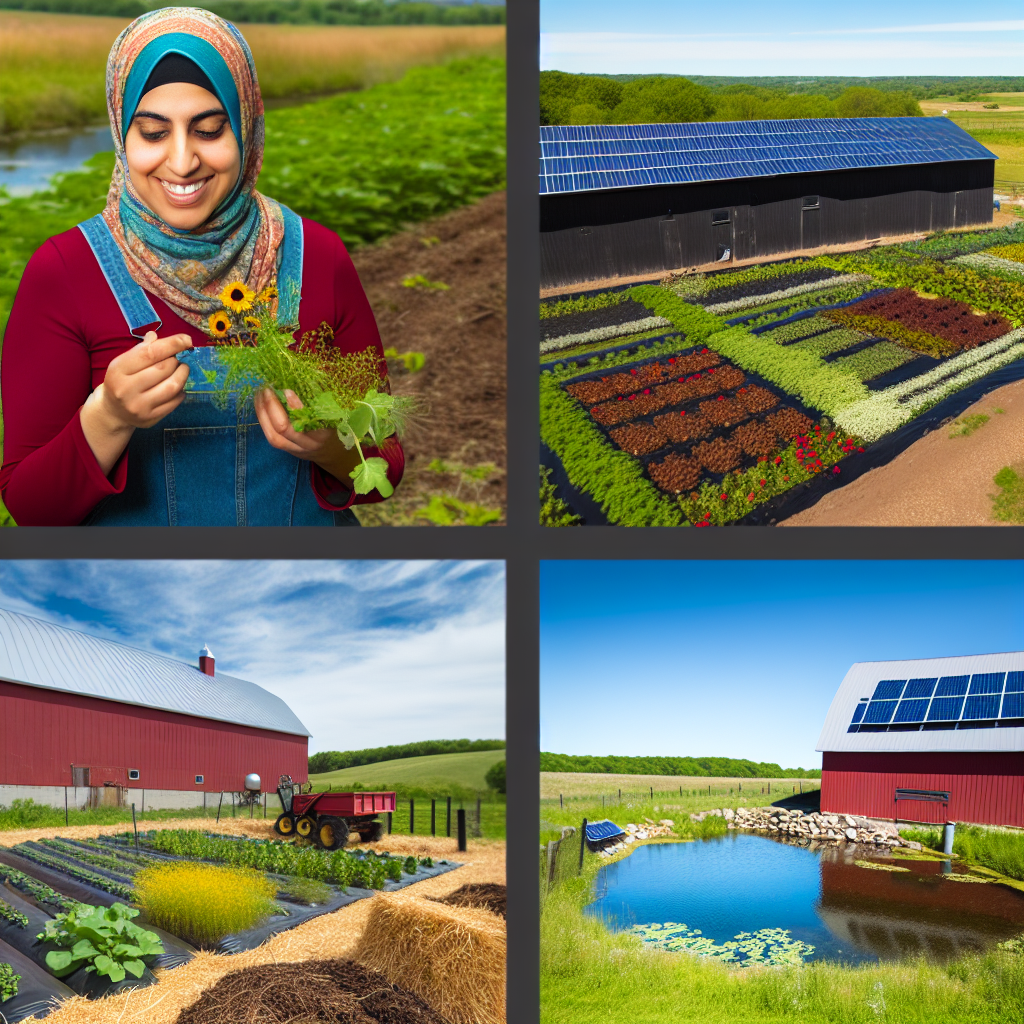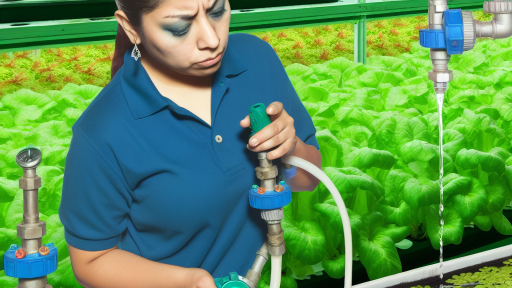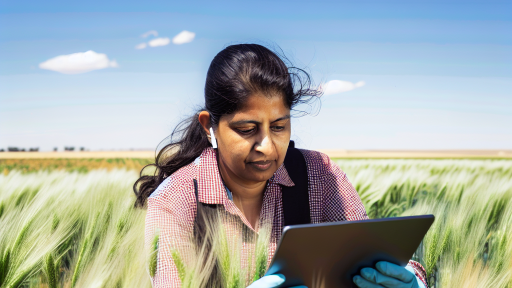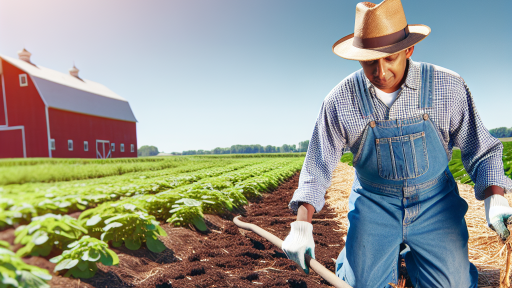Introduction to Cover Crops and Their Importance in Farming
Cover crops play a significant role in modern farming practices.
They enhance soil health and promote biodiversity on agricultural land.
Farmers utilize these crops to cover soil during fallow periods.
This practice leads to numerous benefits for ecosystems and productivity.
Boosting Soil Health
Cover crops improve soil structure and fertility.
They increase organic matter, which enhances nutrient cycling.
Moreover, they help prevent soil erosion and reduce compaction.
Healthy soil supports robust plant growth, leading to better yields.
Promoting Biodiversity
Using cover crops fosters a diverse range of plant species.
Increased plant diversity supports various beneficial insects.
These insects aid in pest control and pollination.
Effective biodiversity management strengthens the farm’s ecosystem.
Weed Suppression
Cover crops can effectively outcompete weeds for resources.
They reduce the need for chemical herbicides, promoting sustainability.
Additionally, they suppress weed growth through mulch cover.
Transform Your Agribusiness
Unlock your farm's potential with expert advice tailored to your needs. Get actionable steps that drive real results.
Get StartedConsequently, they help maintain the health of the main crop.
Improving Water Management
Cover crops enhance water retention in the soil.
They create a network of roots that improves infiltration rates.
This leads to reduced runoff and increased water availability.
Farmers can thus manage irrigation more efficiently.
Economic Benefits
Incorporating cover crops can lead to cost savings over time.
Farmers often spend less on fertilizers and pesticides.
Moreover, improved yield quality can lead to better market prices.
Ultimately, cover crops can enhance the overall profitability of farming operations.
Understanding Biodiversity and Its Role in Sustainable Agriculture
Defining Biodiversity
Biodiversity refers to the variety of life found in different ecosystems.
It includes the diversity within species, between species, and of ecosystems.
This diversity contributes to resilience in agricultural systems.
The Importance of Biodiversity
Biodiversity enhances ecosystem productivity and stability.
A diverse farm ecosystem can better withstand pests and diseases.
It also supports pollinators, which are crucial for crop production.
Healthy biodiversity improves soil health and nutrient cycling.
Biodiversity and Sustainable Practices
Sustainable agriculture relies on the natural balance created by biodiversity.
Cover crops play a vital role in improving on-farm biodiversity.
These crops provide habitat for beneficial organisms.
Moreover, they enhance soil structure and prevent erosion.
Benefits of Biodiversity for Farmers
- Diverse crops reduce dependence on chemical fertilizers.
- They improve resilience to climate change impacts.
- Biodiversity boosts farm profitability through varied income sources.
Encouraging Biodiversity on Your Farm
Farmers can cultivate biodiversity by implementing specific strategies.
Planting a variety of crops can attract beneficial insects.
Incorporating native plants enhances local biodiversity.
Additionally, rotating crops helps restore soil nutrients and health.
Showcase Your Farming Business
Publish your professional farming services profile on our blog for a one-time fee of $200 and reach a dedicated audience of farmers and agribusiness owners.
Publish Your ProfileCreating buffer zones can protect habitats and promote wildlife.
Types of Cover Crops
Legumes
Legumes are an essential type of cover crop for farms.
They are effective at fixing nitrogen in the soil.
This process enhances soil fertility for subsequent crops.
Common legumes include clover, vetch, and peas.
Additionally, they help suppress weeds naturally.
As a result, legume cover crops can reduce herbicide needs.
Grasses
Grasses form another vital category of cover crops.
They improve soil structure with their extensive root systems.
Examples of grass cover crops are rye, oats, and barley.
These crops can help prevent soil erosion effectively.
Moreover, grasses enhance organic matter in the soil.
They can also provide habitat for beneficial insects.
Brassicas
Brassicas, including radishes and mustards, are unique cover crops.
They are excellent for breaking up compacted soil layers.
This trait enhances water infiltration and root growth.
Brassicas also suppress certain pests and diseases.
Furthermore, they provide diverse options for crop rotation.
Using brassicas can lead to healthier soil ecosystems overall.
Uncover the Details: Advanced Tools For Pest And Disease Forecasting
How Cover Crops Enhance Soil Health and Structure
Improved Soil Structure
Cover crops significantly improve soil structure.
They create a network of roots that bind the soil particles together.
This binding action reduces soil erosion and compaction.
As a result, water infiltration becomes more efficient.
Soils with healthy structure can support better crop growth.
Enhanced Soil Fertility
Cover crops enrich the soil with organic matter.
They contribute nutrients during their growth and decomposition.
This process increases the overall fertility of the soil.
Moreover, certain cover crops fix nitrogen in the soil.
Legumes, for example, play a crucial role in this process.
Pest and Weed Management
Cover crops help reduce pest populations.
They provide habitat for beneficial insects that prey on pests.
Additionally, cover crops suppress weed growth effectively.
By outcompeting weeds for sunlight and nutrients, cover crops limit their spread.
This leads to healthier crops and reduced herbicide dependence.
Water Conservation
Cover crops play a vital role in water retention.
They help maintain moisture levels in the soil.
This moisture retention supports plant growth during dry periods.
In addition, cover crops reduce runoff, which conserves water.
Consequently, farms utilizing cover crops can be more resilient to drought.
Showcase Your Farming Business
Publish your professional farming services profile on our blog for a one-time fee of $200 and reach a dedicated audience of farmers and agribusiness owners.
Publish Your ProfileMicrobial Diversity
Cover crops enhance microbial diversity in the soil.
Their roots provide food for beneficial soil microorganisms.
This diversity promotes nutrient cycling and soil health overall.
A rich microbial community supports stronger plants and better yields.
Hence, cover crops contribute to a thriving agricultural ecosystem.
Gain More Insights: Latest Advances In Crop Monitoring Technologies
The Impact of Cover Crops on Pest Management and Natural Predators
Enhancing Pest Control
Cover crops play a crucial role in pest management strategies.
They create habitats that support beneficial insects.
These insects, in turn, help control pest populations naturally.
For example, ladybugs thrive in cover crops and consume aphids.
This natural predation reduces the need for chemical interventions.
Improving Soil Health
Healthy soil promotes a balanced ecosystem.
Cover crops enhance soil organic matter, improving fertility.
Better soil health supports diverse plant life.
This diversity creates habitats for various predator species.
Encouraging Beneficial Microorganisms
Cover crops foster a thriving community of beneficial microorganisms.
These microorganisms improve nutrient availability in the soil.
As a result, they support plant health and resilience.
More resilient plants can better withstand pest pressures.
Providing Alternative Food Sources
Pest predators require food sources to survive.
Cover crops can provide nectar and pollen for these beneficial insects.
More food sources lead to more stable populations of natural predators.
This stability enhances the overall pest management strategy.
Facilitating Crop Rotation
Crop rotation strategies benefit from the inclusion of cover crops.
They help disrupt pest life cycles by varying plant types.
This variation reduces the likelihood of pest infestations.
It also enhances soil quality for subsequent crops.
Learn More: Effective Storage Solutions for Fresh Produce
Economic Benefits of Implementing Cover Crops on Your Farm
Improving Soil Health
Cover crops significantly enhance soil health.
They reduce soil erosion by protecting the topsoil.
Additionally, these crops improve nutrient cycling in the soil.
This leads to better crop yields over time.
Moreover, healthier soil can reduce the need for chemical fertilizers.
Enhancing Crop Productivity
Farmers who use cover crops see an increase in overall productivity.
These crops prevent weed growth, allowing main crops to thrive.
Biodiversity from cover crops helps control pests naturally.
This can lead to reduced pesticide costs for farmers.
Cost Savings Through Erosion Control
Implementing cover crops decreases soil erosion significantly.
This, in turn, saves farmers from re-soiling costs.
Farmers can focus funds on other necessary farm improvements.
Showcase Your Farming Business
Publish your professional farming services profile on our blog for a one-time fee of $200 and reach a dedicated audience of farmers and agribusiness owners.
Publish Your ProfileAccessing Financial Incentives
Using cover crops can provide access to government subsidies.
Many programs support farmers who practice sustainable agriculture.
These financial incentives can make a big difference.
Ultimately, they lower the overall cost of farming operations.
Long-term Sustainability
Incorporating cover crops fosters long-term sustainability.
This can lead to more resilient farm systems over time.
Healthy soils contribute to better water retention.
This helps in times of drought or heavy rainfall.
Furthermore, sustainable practices elevate market values for produce.
Learn More: Integrated Pest Management Forecasting Techniques

Strategies for Selecting the Right Cover Crops for Different Regions
Understanding Local Climate
Evaluate the climate characteristics of your region.
Consider the average rainfall and temperature patterns.
Identify seasonal variations and their impacts on soil behavior.
Choose cover crops that are well-suited for these conditions.
Soi Types and Conditions
Different soil types require different cover crops.
Conduct a soil test to determine pH levels and nutrient content.
Choose crops that enhance the specific attributes of your soil.
Select legumes for nitrogen-fixing in nutrient-depleted soils.
Pest and Weed Management
Cover crops can be strategic in managing pests and weeds.
Research local pest populations and their natural enemies.
Use cover crops that serve as traps or repellents for damaging pests.
Consider crops that compete effectively with common weeds.
Crop Rotation Goals
Integrate cover crops into your crop rotation plans.
Choose cover crops based on the subsequent cash crop’s needs.
Utilize cover crops that improve soil health for future plantings.
Balance deep-rooted species with shallow-rooted options for variety.
Seed Availability and Cost
Assess the availability of cover crop seeds in your local market.
Compare costs of different seed options to find budget-friendly choices.
Consider purchasing in bulk for cost savings over time.
Look for local seed cooperative programs that offer discounts.
Sustainability and Environmental Impact
Choose cover crops that positively impact local ecosystems.
Consider the water usage and potential runoff of selected crops.
Seek varieties that improve soil organic matter over time.
Incorporate cover crops that support pollinator populations.
Case Studies: Successful Farmers Incorporating Cover Crops for Biodiversity
Innovative Practices of Green Pastures Farm
Green Pastures Farm demonstrates remarkable success with cover crops.
The farmer, Emily Grant, uses a mix of clover and rye.
This combination enhances soil fertility effectively.
Moreover, it attracts beneficial insects that support pollination.
For example, her yields increased by 20% over two seasons.
Transitioning to Cover Crops at Sunrise Acres
At Sunrise Acres, John Thompson made a significant transition.
Showcase Your Farming Business
Publish your professional farming services profile on our blog for a one-time fee of $200 and reach a dedicated audience of farmers and agribusiness owners.
Publish Your ProfileHe started using cover crops after attending a workshop.
Now, he grows buckwheat before planting corn.
This method suppresses weeds and improves soil structure.
His farm reports richer biodiversity because of these practices.
Holistic Management at Harmony Farms
Harmony Farms, owned by Sarah Jensen, practices holistic management.
She integrates cover crops into her livestock rotation.
This approach ensures soil retention and reduces erosion.
Additionally, it creates habitats for wildlife on her farm.
Sarah notes an overall health improvement in both crops and livestock.
Collaboration and Learning at Blue Sky Meadows
Blue Sky Meadows has built a strong community around cover crops.
Owners Mike and Linda use workshops to share strategies.
They incorporate legumes to enhance nitrogen levels in the soil.
Furthermore, they promote cover cropping among neighboring farms.
This collaboration leads to shared successes and improved biodiversity.
Challenges and Considerations When Using Cover Crops
Understanding Potential Challenges
Farmers may face various challenges when implementing cover crops.
One significant issue is timing.
Accurately timing planting and termination is essential.
For example, late planting may compromise crop establishment.
Moreover, adverse weather can hinder growth and effectiveness.
Additionally, farmers may encounter difficulty in selecting suitable species.
Choosing the right cover crop depends on soil type and climate conditions.
Nutrient Management and Competition
Another challenge involves nutrient management.
Cover crops can compete for nutrients, particularly nitrogen.
This competition may reduce yields for subsequent cash crops.
Farmers should closely monitor nutrient levels in the soil.
Balancing cover crop growth with nutrient needs is crucial.
Costs and Economic Considerations
There are also economic considerations when using cover crops.
The initial investment for seeds and equipment may be high.
Farmers should consider potential financial benefits in the long run.
For instance, cover crops often enhance soil health and productivity.
Nevertheless, implementing cover crops may not provide immediate returns.
Management Practices and Knowledge Requirements
Effective management practices are essential for successful cover cropping.
Farmers require knowledge of various cover crop species.
They must also be familiar with local planting best practices.
Moreover, integrating cover crops into existing cropping systems can be complex.
Continuous learning and adaptation will lead to better outcomes.
Weed and Pest Management Strategies
Weed control can be another challenge accompanying cover crops.
While cover crops can suppress weeds, improper management may backfire.
Farmers should implement effective weed management strategies.
Additionally, cover crops may attract specific pests and diseases.
Showcase Your Farming Business
Publish your professional farming services profile on our blog for a one-time fee of $200 and reach a dedicated audience of farmers and agribusiness owners.
Publish Your ProfileMonitoring pest populations helps in preventing crop damage.
Future Trends: The Role of Technology in Optimizing Cover Crop Implementation
Advanced Monitoring Systems
Farmers increasingly adopt advanced monitoring systems for cover crops.
These systems provide real-time data on soil conditions and crop health.
For instance, IoT sensors can measure moisture levels and nutrient content.
Farmers can then make informed decisions on irrigation and fertilization.
Data Analytics and Precision Agriculture
Data analytics plays a crucial role in modern farming techniques.
Farmers analyze historical data to choose the best cover crops for their fields.
Precision agriculture technology helps optimize planting and harvesting schedules.
As a result, farmers can increase yields while reducing resource use.
Mobile Apps for Crop Management
Mobile applications simplify cover crop management for farmers.
These apps offer features like crop rotation schedules and pest alerts.
Farmers can track their activities and adjust practices on-the-go.
This accessibility promotes proactive decision-making in the field.
Automated Equipment and Robotics
Automation is transforming how farmers implement cover crops.
Robotic systems can plant cover crops with precision and efficiency.
These machines reduce labor costs and ensure timely planting.
Moreover, automation minimizes soil disturbance, enhancing soil health.
The Importance of Data Sharing and Community Platforms
Data sharing among farmers fosters collaboration and learning.
Online platforms allow farmers to exchange best practices and insights.
This community-led approach accelerates innovation in cover crop practices.
Access to shared data helps farmers adopt successful strategies more quickly.
Additional Resources
Influence of cover crops at the four spheres: A review of ecosystem …




